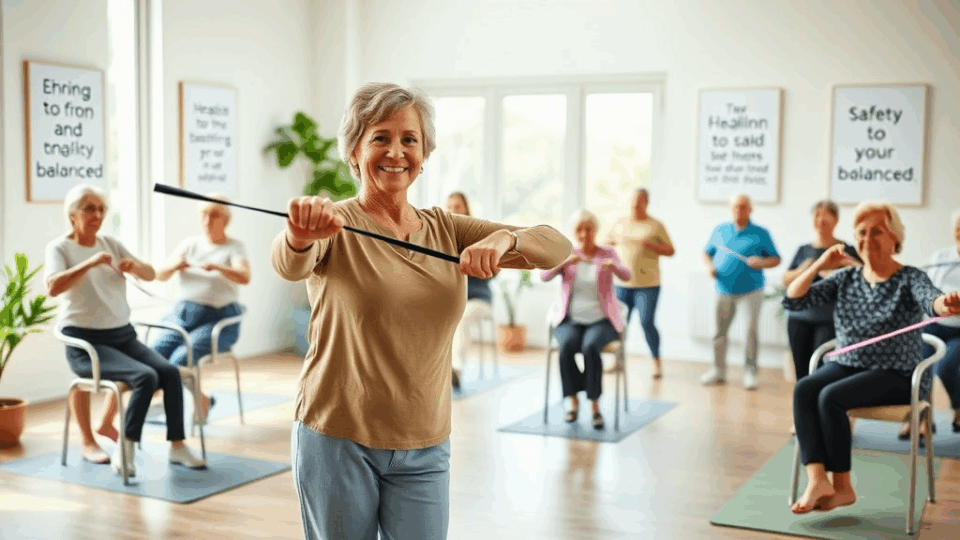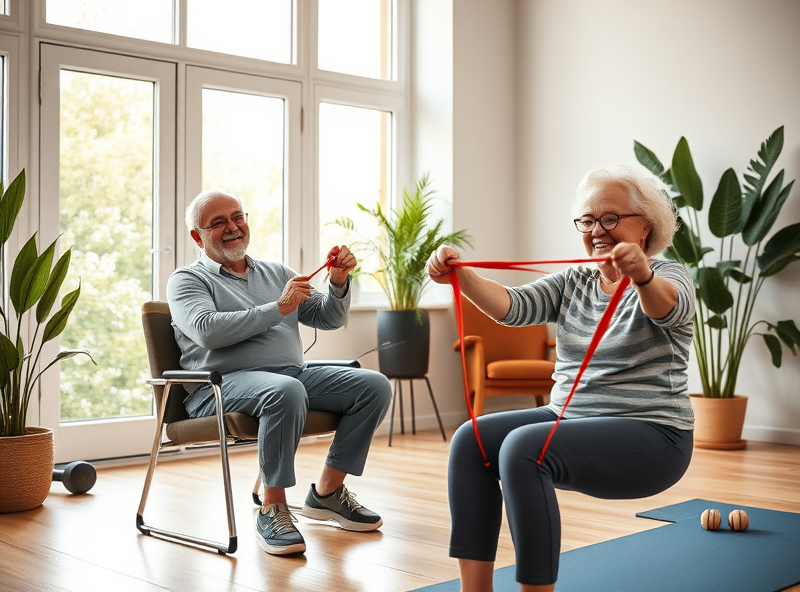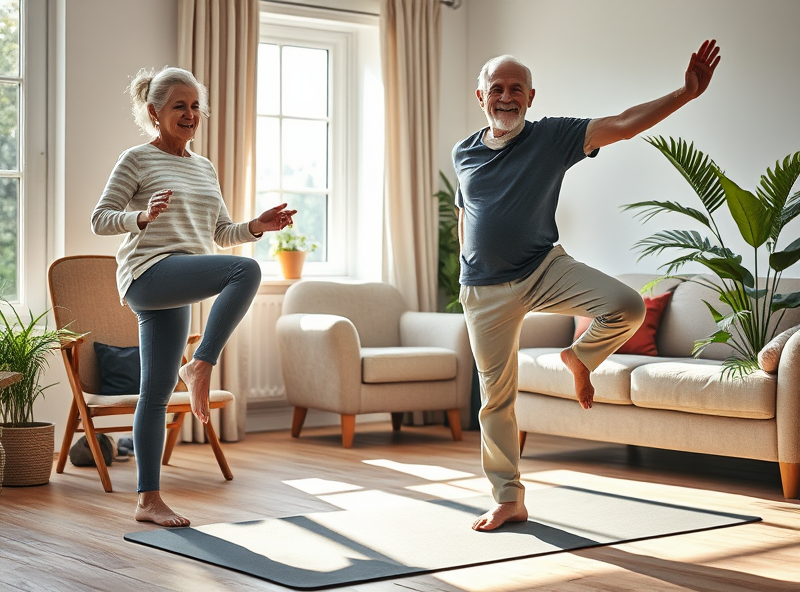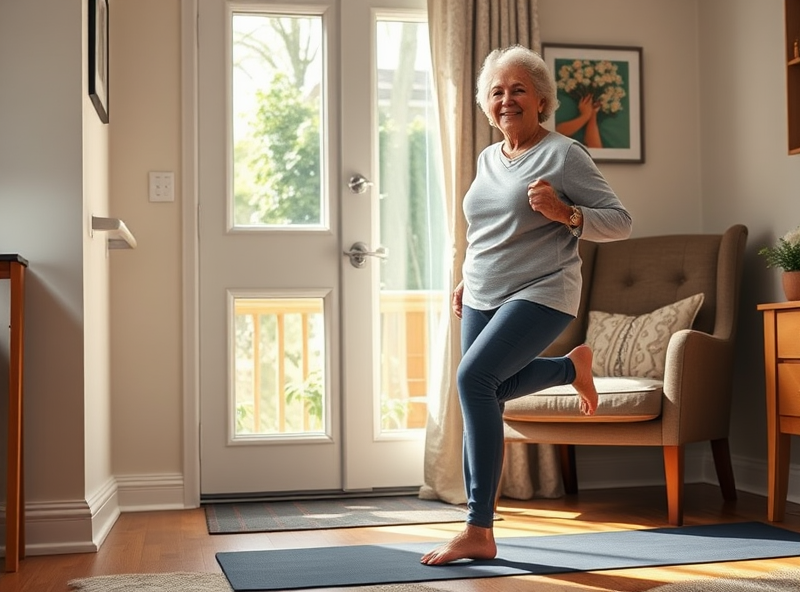
Safe Exercise for Seniors: Stay Strong and Balanced
Cardio Activities for Longevity

Staying active is one of the most powerful ways seniors can support their health and independence. Cardiovascular exercises, often called ‘cardio,’ are especially important for promoting heart health, boosting energy, and increasing life expectancy. The good news? You don’t need to run marathons to enjoy the benefits. Gentle, low-impact cardio activities can be both safe and highly effective for older adults.
Walking is one of the best and most accessible forms of cardio. A daily 20- to 30-minute walk at a comfortable pace can improve circulation, reduce the risk of chronic diseases, and elevate mood. If walking outdoors isn’t ideal, consider indoor walking at a mall or on a treadmill.
Swimming and water aerobics are also excellent choices. The water supports your body, reducing stress on joints while still providing resistance to strengthen muscles and improve cardiovascular endurance. These activities are especially beneficial for those with arthritis or joint pain.
Cycling on a stationary bike is another heart-healthy option. It’s gentle on the knees and can be done at home or in a gym. Many seniors enjoy the rhythm and low risk of injury that stationary biking offers.
Even dancing can be a joyful and effective cardio workout. Whether it’s a gentle ballroom dance or a fun group class like Zumba Gold, moving to music helps improve balance, coordination, and heart health.
The key is to choose activities that feel enjoyable and sustainable. Always consult with a healthcare provider before starting a new exercise routine, and listen to your body. Staying consistent with cardio can help you feel more energetic, sleep better, and stay independent longer.
Remember, it’s never too late to start moving. Every step, stroke, or pedal counts toward a longer, healthier life.
Strength Training for Muscles and Bones

As we age, maintaining muscle strength and bone density becomes essential for staying active, independent, and confident in our daily lives. Strength training isn’t just for athletes or bodybuilders—it’s a safe and highly beneficial activity for seniors too, when done correctly.
Strength training helps slow down the natural loss of muscle mass and bone density that comes with aging. This means fewer falls, better balance, and stronger bones that are less prone to fractures. It also improves joint flexibility, posture, and even boosts mood and energy levels.
For seniors, the key is to start slow and focus on proper form. Bodyweight exercises like wall push-ups, chair squats, and gentle resistance band workouts are excellent starting points. Light dumbbells or resistance machines can also be used under supervision or guidance from a fitness professional.
Aim for two to three sessions per week, allowing rest days in between. Always warm up before and cool down after each session. And most importantly, listen to your body—if something doesn’t feel right, it’s okay to stop and adjust.
Strength training can be a joyful and empowering part of your routine. With consistency and care, it can help you stay strong, mobile, and full of life well into your golden years.
Flexibility and Balance for Fall Prevention

As we age, maintaining flexibility and balance becomes essential for staying independent and preventing falls. Gentle stretching and balance exercises can significantly improve your mobility, coordination, and confidence in daily activities.
Start with simple stretches like shoulder rolls, neck tilts, and gentle hamstring stretches. These movements help keep your muscles limber and reduce stiffness. Yoga and tai chi are also excellent low-impact options that promote both flexibility and balance, while calming the mind.
Balance exercises such as standing on one foot, heel-to-toe walking, or using a chair for support while shifting your weight from side to side can be done safely at home. Practicing these a few times a week can enhance your stability and reduce the risk of falls.
Remember, it’s never too late to start. Even a few minutes a day can make a big difference. Always consult with your doctor before beginning any new exercise routine, especially if you have existing health conditions. With patience and consistency, you’ll feel stronger, steadier, and more confident in your movements.
Home-Based Rehab and Fall-Proof Programs

As we age, staying active becomes more important than ever — not just for strength, but for independence and confidence. Home-based rehabilitation and fall-prevention programs are a gentle yet powerful way for seniors to regain mobility, improve balance, and stay safe in their own homes.
These programs are designed with comfort and safety in mind. They typically include low-impact exercises such as seated leg lifts, gentle stretching, and balance training like standing on one foot while holding onto a chair. These movements help strengthen key muscle groups, improve coordination, and reduce the risk of falls — one of the most common causes of injury among older adults.
The beauty of home-based rehab is that it allows seniors to progress at their own pace, in a familiar environment. Many programs can be guided by a physical therapist or accessed through online videos tailored for older adults. Consistency is key: just 15–30 minutes a day can make a meaningful difference.
To make your home safer, consider small adjustments like installing grab bars in the bathroom, using non-slip mats, and ensuring good lighting in hallways. These simple changes, combined with regular movement, can greatly reduce fall risks.
Remember, it’s never too late to start. With the right support and a little daily effort, seniors can enjoy a stronger, more balanced life — right from the comfort of home.







답글 남기기